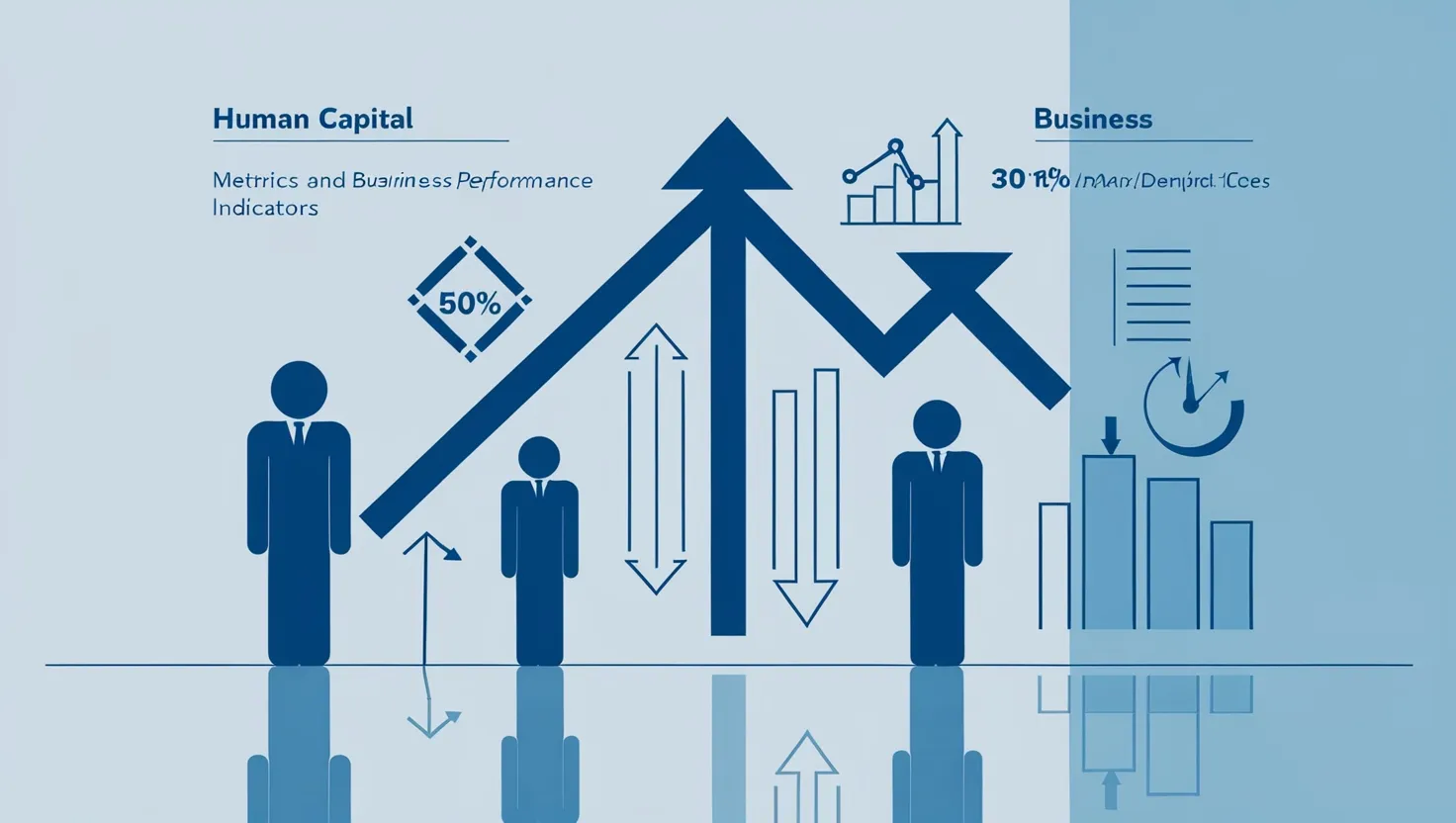Understanding the metrics that drive human capital is crucial for organizations that want to assess their future performance. As businesses increasingly recognize that their workforce is their most valuable asset, the importance of analyzing various human capital metrics cannot be overstated. What if I told you that your company’s operational excellence, innovation potential, and even financial success can be reflected through thoughtful measurement of employee engagement, leadership, and more?
First, let’s discuss the Employee Net Promoter Score (eNPS). This metric serves as a significant predictor of operational effectiveness. It asks a straightforward question: “On a scale from 0 to 10, how likely are you to recommend our company as a place to work?” It is a simple yet profound reflection of employee sentiment. Engaged employees are more likely to be productive and contribute positively to the company’s culture. Companies with high eNPS scores typically experience decreased turnover, which directly correlates with lower costs for recruitment and onboarding. In fact, organizations with engaged employees see profits rise by an impressive 21% and productivity increase by 17%. This detail prompts an essential reflection: how often do we truly listen to our employees?
“Treat your employees like they make a difference and they will.” – Jim Goodnight.
Leadership bench strength ratio is another crucial metric that can indicate a company’s succession readiness. This measurement looks at the proportion of leadership roles filled by internal candidates versus external hires. Companies with a strong internal leadership pipeline often exhibit greater stability and continuity, resulting in better organizational performance. By fostering talent from within, organizations not only enhance employee morale but also mitigate the risks associated with new leadership styles that might diverge significantly from the existing culture.
What about innovation? The innovation contribution rate from employee initiatives can serve as a powerful indicator of an organization’s growth potential. When employees feel empowered to propose and develop new ideas, they not only contribute to a culture of creativity but can also directly influence the company’s ability to remain competitive. This metric tracks the number of innovations generated from within the organization and correlates them to actual business outcomes. So, how invested is your company in encouraging innovative thinking among your employees?
Learning investment effectiveness and skill acquisition velocity are equally essential. In today’s rapidly changing work environment, organizations must prioritize ongoing training and development. This metric evaluates how effectively companies are investing in employee education and how quickly skills are being acquired and adapted to meet evolving market demands. A company that prioritizes learning typically enjoys a more agile workforce. But I often wonder, do organizations truly understand the return on investment for their training initiatives?
“An investment in knowledge pays the best interest.” – Benjamin Franklin.
Talent retention curves provide additional insights into how organizations manage high-performance roles. By analyzing how long high-performing employees stay with the company, leaders can identify patterns and factors that contribute to employee satisfaction or dissatisfaction. This understanding can inform retention strategies that not only keep top talent engaged but also enhance overall company performance. Have you considered how your organization supports its star players?
Cross-functional mobility can serve as a growth indicator. When employees have the opportunity to move between different departments, they can foster a broader understanding of the company and contribute to more innovative solutions. This metric measures the frequency and success of employees moving across departments and how such mobility affects their performance and satisfaction. Companies that encourage cross-functional movement often find they enhance collaboration and build a more holistic view of the organization. So, how does your organization facilitate internal mobility?
Lastly, let’s explore compensation efficiency in relation to productivity measures. This metric examines how well a company’s compensation structures correlate with employee output. High-performing companies often find that their pay structures align closely with productivity levels, leading to better retention and performance. Understanding this relationship can provide insights into how to better align employee compensation with their contributions to the company’s success.
“People work for money but go the extra mile for recognition, praise, and rewards.” – Dale Carnegie.
As workforce landscapes evolve, there is a growing trend of using human capital metrics alongside traditional financial indicators in valuation models. Investors are increasingly incorporating these metrics into their analyses to gain deeper insights into a company’s long-term sustainability and growth potential. By understanding and measuring these critical elements of human capital, businesses can better prepare for the future and refine their strategies.
These insights offer a lens through which to evaluate not just current performance, but also future trajectories. Metrics such as eNPS, leadership bench strength, innovation contributions, and others not only tell a story of where a company stands today but also forecast potential challenges and opportunities on the horizon.
Incorporating these human capital metrics into strategic decision-making can create a more agile and forward-thinking organization. By doing so, we allow insights into our workforce to drive not just HR strategies but also the overall business strategy. As we continue to navigate the complexities of modern work environments, prioritizing employee engagement, fostering innovation, and creating pathways for growth will be the differentiators between organizations that thrive and those that merely survive.
Looking back on the metrics discussed, it prompts me to reflect on the pivotal role employees play in shaping a company’s direction and success. Are we fully embracing the potential of our workforce? As we enhance our focus on these key human capital metrics, we’ll not only unlock opportunities for growth but also cultivate an environment where both employees and the organization can flourish.
Remember, the future performance of your company may just hinge on how well you understand and measure the value of your human capital.





